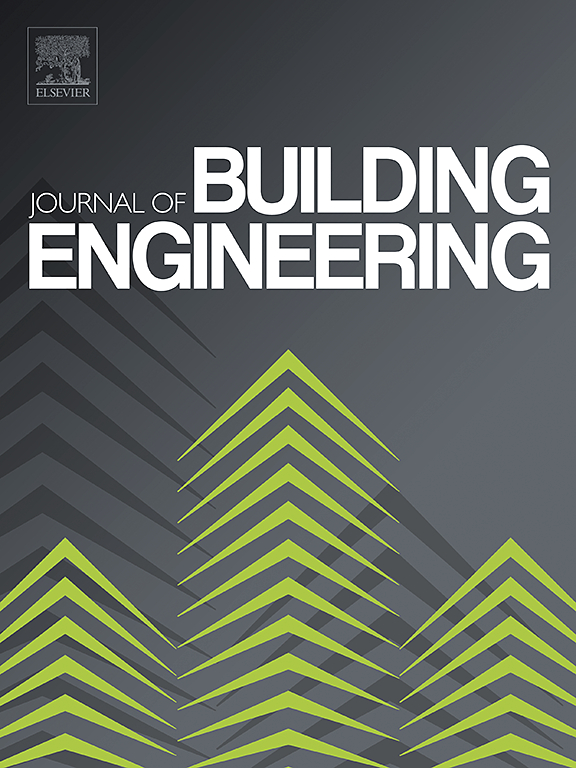先进的火星建筑:高强度的ISRU砖,坚固的硫键,模块化组装,和经有限元验证的金字塔栖息地
IF 7.4
2区 工程技术
Q1 CONSTRUCTION & BUILDING TECHNOLOGY
引用次数: 0
摘要
在火星上可持续的栖息地建设面临着重大挑战,包括低大气压阻碍水合作用,重力降低使压实复杂化,以及栖息地压力差大。本研究提出了一种集成的原位资源利用(ISRU)方法,该方法结合了高强度风化砖、无水化硫键和经过有限元分析(FEA)验证的模块化金字塔栖息地设计。优化的机械压实(40 MPa)纳米二氧化硅增强火星风化模拟物有效绕过水化约束,即使在环境温度下也能达到超过20 MPa的抗压强度。系统的参数研究(压力、粒度、含水量、温度)得出了预测设计方程,并证明了热处理(1000°C)的潜在强度提高可达44.5 MPa。此外,还开发了一种坚固的无水化硫基砂浆,用于模块化组装;优化后的平切界面产生了超过2.0 MPa的结合强度,关键是将破坏模式从结合界面转移到砖材料本身(确保可靠的最小抗拉能力为1.2 MPa)。利用这些进步,设计了一个金字塔形的栖息地模块,有利于火星环境负载(包括101.3 kPa的内部压差和3.71 m/s2的重力)。结合实验得出的材料性能(例如,22 MPa抗压强度,1.2 MPa拉伸/键合能力),FEA证实了结构的完整性,最大预测拉伸应力(1.15 MPa)保持在键合极限以下。这项研究提供了一个全面的、经过实验验证的框架——从材料开发和粘合到结构应用——用于在火星上建造资源高效、耐用的栖息地,显著推进了可持续地外基础设施的解决方案。本文章由计算机程序翻译,如有差异,请以英文原文为准。
Advanced Martian construction: High-strength ISRU bricks, robust sulfur bonding, modular assembly, and FEA-verified pyramid habitats
Sustainable habitat construction on Mars faces significant challenges, including low atmospheric pressure hindering hydration, reduced gravity complicating compaction, and large habitat pressure differentials. This study presents an integrated In-Situ Resource Utilization (ISRU) approach combining high-strength regolith bricks, hydration-free sulfur bonding, and a modular pyramid habitat design validated by Finite Element Analysis (FEA). Optimized mechanical compaction (40 MPa) of nano-SiO2 -enhanced Martian regolith simulant effectively bypasses hydration constraints, achieving compressive strengths exceeding 20 MPa even at ambient temperatures. A systematic parameter study (pressure, particle size, water content, temperature) yielded predictive design equations and demonstrated potential strength enhancement up to 44.5 MPa with thermal treatment (1000°C). Furthermore, a robust, hydration-free sulfur-based mortar was developed for modular assembly; optimized flat-cut interfaces yielded bond strengths exceeding 2.0 MPa, crucially shifting the failure mode from the bond interface to the brick material itself (ensuring a reliable minimum tensile capacity >1.2 MPa). Leveraging these advancements, a pyramid-shaped habitat module, advantageous for Martian environmental loads (including a 101.3 kPa internal pressure differential and 3.71 m/s2 gravity), was designed. FEA, incorporating experimentally derived material properties (e.g., 22 MPa compressive strength, 1.2 MPa tensile/bond capacity), confirmed the structural integrity, with maximum predicted tensile stress (1.15 MPa) remaining below the bond limit. This research provides a comprehensive, experimentally validated framework—from material development and bonding to structural application—for constructing resource-efficient, durable habitats on Mars, significantly advancing solutions for sustainable extraterrestrial infrastructure.
求助全文
通过发布文献求助,成功后即可免费获取论文全文。
去求助
来源期刊

Journal of building engineering
Engineering-Civil and Structural Engineering
CiteScore
10.00
自引率
12.50%
发文量
1901
审稿时长
35 days
期刊介绍:
The Journal of Building Engineering is an interdisciplinary journal that covers all aspects of science and technology concerned with the whole life cycle of the built environment; from the design phase through to construction, operation, performance, maintenance and its deterioration.
 求助内容:
求助内容: 应助结果提醒方式:
应助结果提醒方式:


